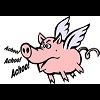remote oil cooler hose size, 8,10 or an12?
Announcements
-
Similar Content
-
Latest Posts
-
Mine is all -12, I’m running a dry sump in a billet block though
-
HG's high flow is not "bolt on". The core is shorter, moves the comp cover rearwards in the engine bay. means you have to deal with the inlet plumbing a little bit. This is probably something to consider with every "bolt on" turbo anyway.
-
HyperGear. Just get a high flow of the stocker. Good, reliable, and should bolt on. Yes it will want things like a retune once done, so you need to factor this in to your spend too.
-
Hi. Iam looking for some "cheaper" bolt on turbo on RB25DET NEO. I do not want "big" power just better reliability than the stock turbo which is "fot now" good but is old and i do not think it has "easy" life. One the Skyline here running some "temu" china Turbo but i dont trust those... Thanks!
-
Hi guys, Making some space/cleaning up. A whole heap of random OEM R33 GTR parts and other random bits and bobs. I will update this thread as I go. Parts are located in Moorebank NSW 2170. Pickup preferred but will post at buyers expense. Prices are negotiable. If they don’t sell it will go in the bin. Item 1: BOV return pipe. $40 Item 2: RB26 cam gears. $20 Item 3: R33 GTR torque split, oil temp, boost centre gauge. $100 Item 4: RB26 fuel rail x 2. $20 each Item 5: RB26 Recirc valves. $50 Item 6: OEM upper front arms. $20 Item 7: Royal Purple Max Gear 75w-140 1 quart/946 ml x 5. $50 each or 5 for $200. Item 8: OS Giken 80w-250 diff oil 1 litre. $25 Item 9 Eibach springs. ers-11-140-60-0140. $100 https://www.streetfx.com.au/eib140-60-0060-eibach-ers-140mm-length-x-60mm-id-coil-over-spring?_ga_campaignid=22235933977&_ga_adgroupid=180146800292&_ga_keyword=&_ga_device=m&_ga_target=pla-295238231169&_ga_locint=&_ga_locphy=9071723&_ga_matchtype=&_ga_network=g&_ga_device=m&_ga_placement=&_gcl_id=CjwKCAjwlt7GBhAvEiwAKal0cvkVE_hstv24cDiaICsIk1oznH9zAoJf3By6vR3Tpe7jmByqM6JFHBoCZYAQAvD_BwE&gad_source=1&gad_campaignid=22235933977&gbraid=0AAAAADPiTbo1xAuvnjIWWYnezivf-BUSY&gclid=CjwKCAjwlt7GBhAvEiwAKal0cvkVE_hstv24cDiaICsIk1oznH9zAoJf3By6vR3Tpe7jmByqM6JFHBoCZYAQAvD_BwE
-







Recommended Posts
Create an account or sign in to comment
You need to be a member in order to leave a comment
Create an account
Sign up for a new account in our community. It's easy!
Register a new accountSign in
Already have an account? Sign in here.
Sign In Now